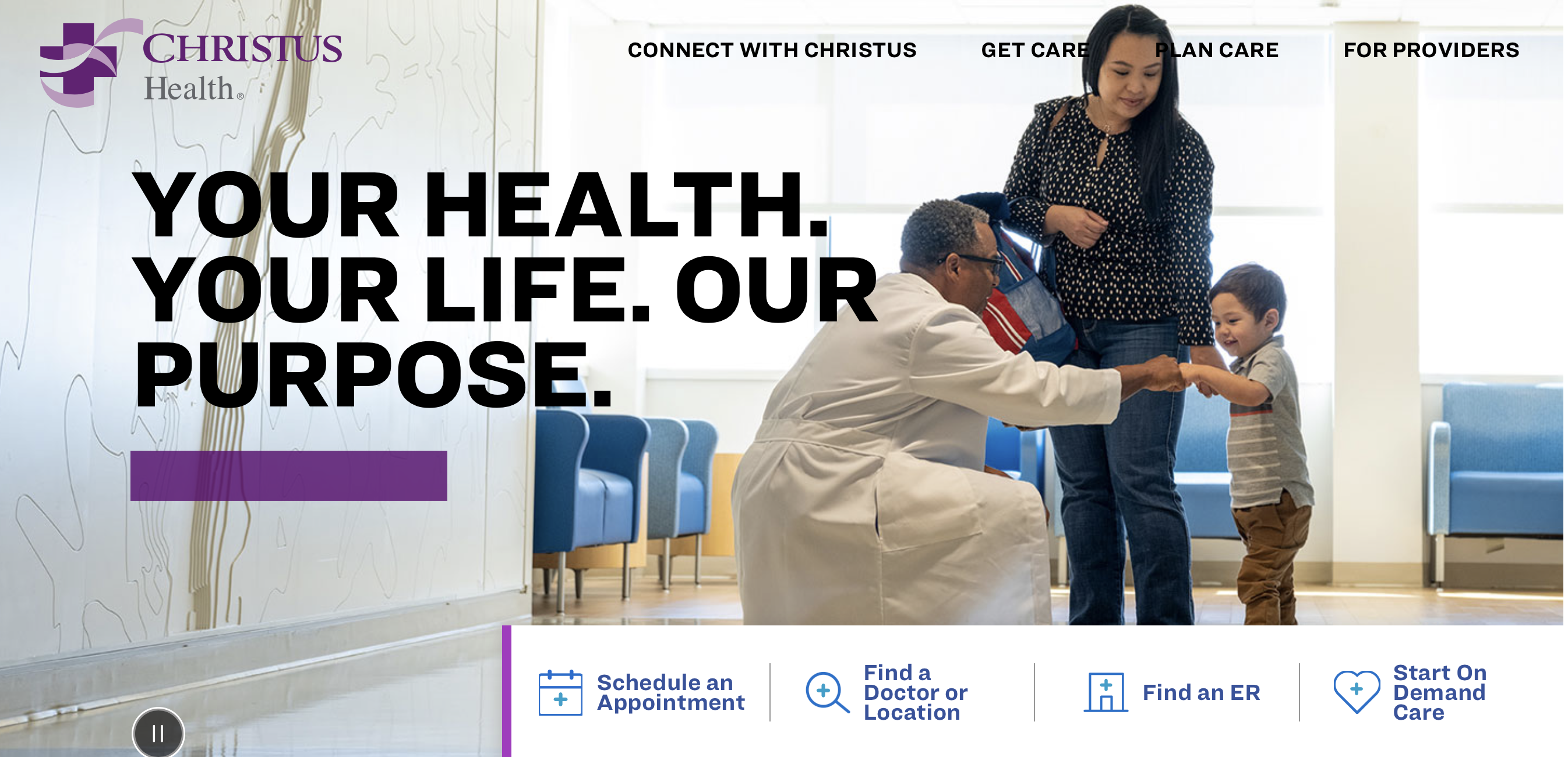MARKETING
Sustaining a Consumer-Focused Content Strategy: "Can We Just Put the Old One Back?"
Just about every marketing professional understands the excitement and angst associated with the “go-live” event of a new website. Jeff Stewart, the vice president of strategic marketing for Christus Health, who recently spearheaded the massive re-architecting of the health system’s web presence, describes the launch as anything but a “kumbaya moment.”
“It was everything that our executive team wanted. Our team received a lot of praise from the system leadership side,” Stewart explains. “But for every piece of praise from system leadership, there was an equal and opposite amount of feedback from the local physician group leadership. I don’t mean it was the first day or the first week that my phone rang from several of our local leaders asking us, ‘Can we put it back?’ It was three, four and five months later that I was still being pulled into meetings and having people insist that we just put the old website back.”
In the continued face of internal pushback, Stewart remained confident that his team’s extensive work and research into how best to serve the consumers seeking health information and care at Christus Health would prevail.
The Challenge
A collection of 12 health systems across New Mexico, Texas and Louisiana, Christus Health’s previous website was organized from an internal stakeholder perspective rather than a consumer-focused standpoint.
“It was structured the way physicians thought it should be, and the presentation of the core services were listed the way a local CEO requested without regard for the patient experience,” Stewart recalls.
According to Stewart, the 12 health systems, growing through acquisitions, had content that functioned as microsites. “Administrators, executives and physicians inside the ministries viewed the content as their own, not in service of the larger brand, and not in service of efficient consumer access or facilitating navigation,” Stewart says.
In addition, many of the geographies of these ministries, or individual health systems, were contiguous. Patients in one ZIP code might have found themselves navigating one health system’s website while another website might have better met their needs, depending on the service and location they were searching for. This created a disconnect between the various web pages, services, locations and providers.
“This disconnect created a condition where if we had more than 40 hospitals across the U.S. and all of them had orthopedics, for example, there were more than 50 pages describing essentially the same set of services. Google was unable to process those 50 pages as unique or different per location,” Stewart notes. “There was no place to define what orthopedic care at Christus was like. Instead, we had 45 almost duplicate versions of orthopedic care at Christus.”
To further complicate the issue, while a branded search for Christus Health posed no issue with Google, specific service lines such as orthopedics or cardiologythink “cardiology near me,” for example—didn’t exist as unbranded searches inside search engines. “That was the consequence of an internally focused content strategy where we allowed our ministries and our physician priorities to define the consumer experience and build artificial boundaries between relevant pieces of content.”
The Solution
The solution to the internally focused web presence was to look at the website navigation and content from the consumer lens. The redesign aligned all the services Christus Health offered in one place—the health system’s main website. Now, instead of each individual ministry having the same content for the same service, the main website houses the service line page and attaches those service lines to the physicians in the locations that offer them. A ZIP code lookup tool allows consumers to filter to the location or the physician that offers a specific service.
Defending the Approach
Throughout the process (and to this day), Stewart championed the website redesign, saying, “It was the right thing to do.” He also presented the data, and numbers don’t lie. With the new site, he was able to show quantitatively that it was reaching consumers and engaging them, combining data with consumer feedback and patient stories. The feedback and analytics showed that potential patients were searching for, and finding, the services they needed at Christus Health, and that the once unbranded service line searches showing zero impressions were now performing well organically. People were finding the information they were searching for, and being properly funneled to the providers, services and locations needed.
“When experiencing a conflict, I always ask, ‘How do we get to a shared goal?’ Because from a shared goal, we can begin to understand and consider the other’s perspective all in service of the goal of our mission,” Stewart notes. “And that’s what this consumer focus allows us to do. When we remind ourselves that we all want more consumers and new patient visits, we can demonstrate how we are working toward that goal rather than insisting, ‘Let’s just put the old one back.’”
Today and Beyond
While the data continues to show monthly growth in organic traffic more than one-year post-launch, some internal pushback continues, and so does educating internal stakeholders about the reason behind the important changes made to the website. Stewart remains steadfast in the end goal of building the best digital experience from the consumer perspective.
“It really drives home the importance from the consumer’s perspective because the one thing we all have in common at Christus Health is our mission,” he says. “When we can show how we are doing that by meeting the needs of our consumers where they are, then we can stand up for this website. It unites us as a brand and makes it easy for our consumers to get answers to the questions they’re asking and an easier way to access our system.”



